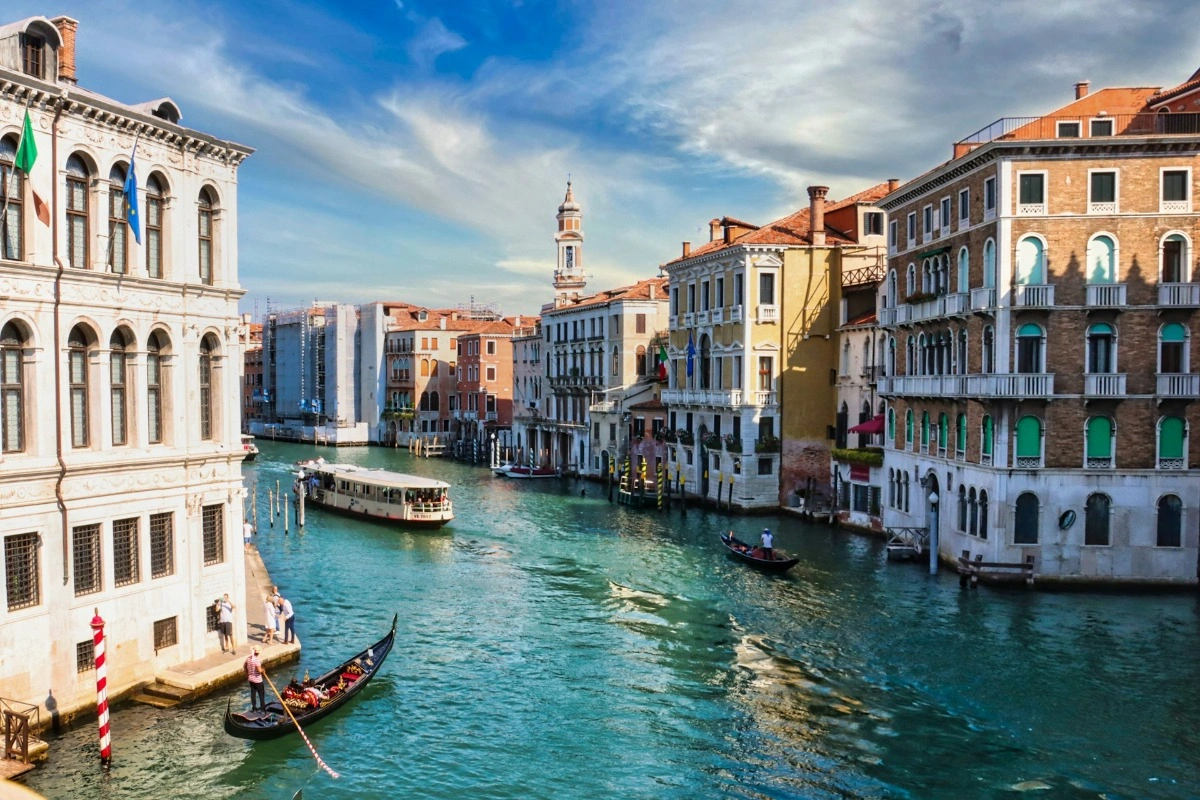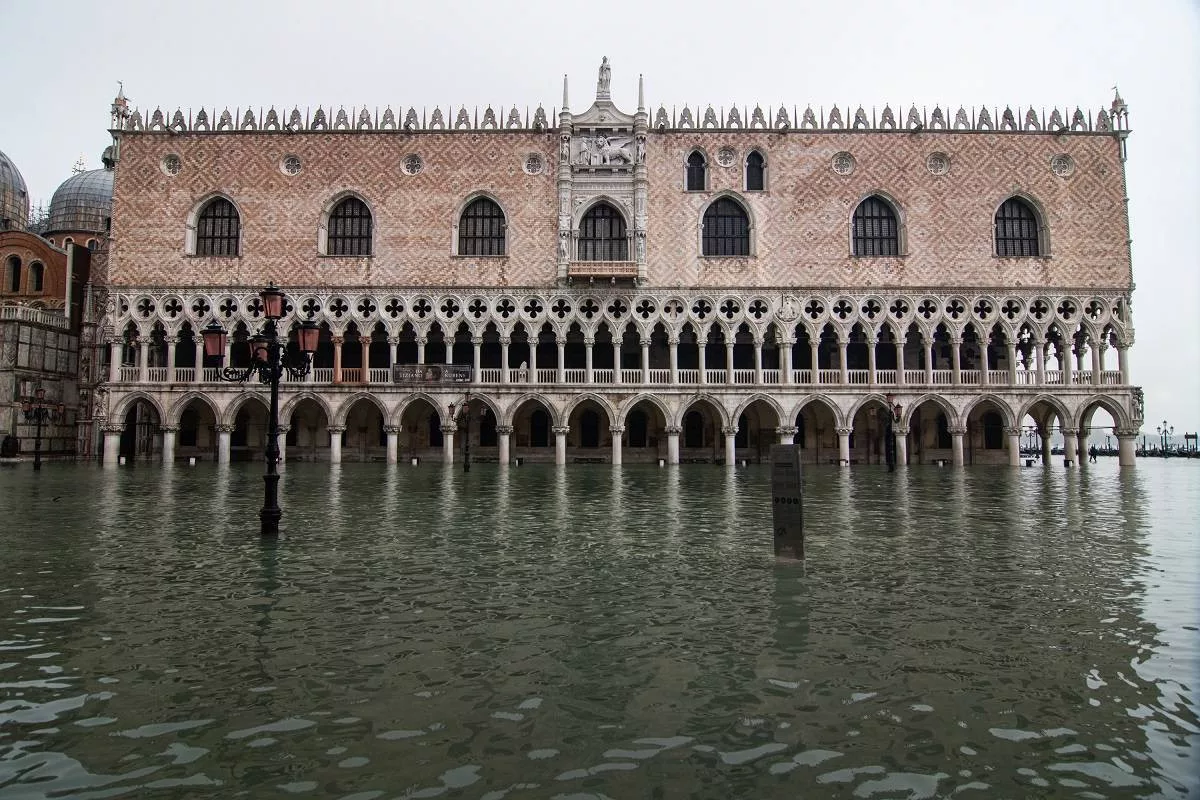As all residents of the city know, Venice is an upside-down forest.
This 1,604-year-old city rests on millions of short wooden piles driven into the ground, pointing downwards.
These trees – larch, oak, alder, pine, spruce and elm, ranging in length from 3.5 metres to less than a metre – have for centuries supported stone palaces and tall bell towers, a true engineering feat exploiting the forces of physics and nature.
In most modern structures, reinforced concrete and steel do the work that this inverted forest has been doing for centuries. But despite their strength, few foundations today could last as long as those in Venice.
‘Nowadays, concrete or steel piles are designed with a 50-year guarantee,’ explains Alexander Puzrin, professor of geomechanics and geosystems engineering at ETH Zurich in Switzerland.
Of course, they could last longer, but for the construction of houses and industrial structures, the standard lifespan is 50 years.
The Venetian pile technique is fascinating for its geometry, centuries-old strength and scale.
No one knows exactly how many millions of piles lie beneath the city, but there are 14,000 wooden posts packed tightly together in the foundations of the Rialto Bridge alone, and 10,000 oak trees beneath St. Mark’s Basilica, built in 832 AD.
Image caption: The people who drove the piles into the silt were known as battipali, or pile drivers, and used a song to help them keep time as they worked.
How they did it
The piles were driven as deep as possible, starting at the outer edge of the structure and working their way towards the centre of the foundations, usually at a rate of nine piles per square metre in a spiral pattern.
The heads were then sawn to obtain a smooth surface, located below sea level. Transverse wooden structures – zatteroni (planks) or madieri (beams) – were laid on top.
On these wooden foundations, the workers laid the stones of the building.
The Republic of Venice quickly began to protect its forests in order to provide sufficient wood for construction, as well as for ships.
‘Venice invented forestry,’ explains Nicola Macchioni, research director at the Italian National Research Council’s Institute of Bioeconomy, referring to the practice of tree cultivation.
Venice is not the only city to use wooden piles for its foundations, but key differences make it unique.
Amsterdam is another city partially built on wooden piles. Here, as in many other cities in Northern Europe, they are driven down to bedrock and function like long columns, or like the legs of a table.
‘This is acceptable if the rock is close to the surface,’ explains Thomas Leslie, professor of architecture at the University of Illinois.
On the shores of Lake Michigan in the United States, where Leslie is based, bedrock could be 30 metres deep.
‘Finding trees that big is difficult, isn’t it? It is said that in Chicago in the 1880s, they tried to drive one tree trunk onto another, which, as you can imagine, proved unsuccessful. Eventually, they realised that they could rely on the friction of the soil.’
The principle is based on the idea of reinforcing the soil by planting as many piles as possible, thereby significantly increasing the friction between the piles and the soil.
Image caption: The wooden piles under Venice are slowly degrading as anaerobic bacteria attack the cell walls of the wood fibres.
The technical term for this is hydrostatic pressure, which essentially means that the ground ‘grips’ the piles if several are inserted densely in the same place, explains Leslie.
Indeed, Venetian piles work in this way: too short to reach bedrock, they keep buildings standing thanks to friction. But the history of this construction method goes back even further.
This technique was mentioned by the first-century Roman engineer and architect Vitruvius; the Romans used submerged piles to build bridges, also close to the water.
In China, water gates were also built with friction piles. The Aztecs used them in Mexico City until the arrival of the Spanish, who demolished the ancient city and built their Catholic cathedral on top of it, notes Puzrin
‘The Aztecs knew how to build in their environment much better than the Spanish later on, who now have huge problems with this metropolitan cathedral [where the ground is sinking unevenly].’
Puzrin runs a postgraduate course at ETH that studies famous geotechnical failures. ‘And this is one of those failures. This cathedral in Mexico City, and Mexico City in general, is an open-air museum where you can see everything that can go wrong with its foundations.’
Image caption: Wood, soil and water combine to give Venice’s foundations remarkable strength.

Why doesn’t the wood rot?
After more than a millennium and a half under water, Venice’s foundations have shown remarkable resilience. However, they are not immune to damage.
Ten years ago, a team from the universities of Padua and Venice (departments ranging from forestry to engineering and cultural heritage) studied the condition of the city’s foundations, starting with the bell tower of the Frari church, built in 1440 on alder piles.
The Frari bell tower has been sinking 1 mm per year since its construction, for a total of 60 cm.
Compared to churches and buildings, bell towers have a greater weight distributed over a smaller area and therefore sink deeper and faster, ‘like a stiletto heel,’ explains Macchioni, who was part of the team studying the city’s foundations.
The team found that, in all the structures studied, the wood was damaged (bad news), but that the mixture of water, mud and wood was holding the whole structure together (good news).
They disproved the commonly held belief that wood under the city does not rot because it is in an anaerobic environment, or without oxygen. Bacteria attack wood, even in the absence of oxygen.
But bacteria work much more slowly than fungi and insects, which thrive in the presence of oxygen.
In addition, water fills the cells emptied by bacteria, allowing the wood piles to retain their shape.
‘Is there cause for concern? Yes and no, but we should still consider continuing this type of research,’ says Izzo. Since the sampling carried out ten years ago, they have not taken any new samples, mainly due to logistical constraints. It is not known how many centuries the foundations will last, says Macchioni.
‘However, [they will last] as long as the environment remains the same. The foundation system works because it is made of wood, earth and water.’ The soil creates an oxygen-free environment, the water contributes to this and maintains the shape of the cells, and the wood provides friction.
‘Incredibly beautiful’
In the 19th and 20th centuries, wood was completely replaced by cement in foundations. In recent years, however, a new trend in timber construction has attracted growing interest, particularly with the rise of wooden skyscrapers.
‘It’s the trendy material of the moment, and for very good reasons,’ comments Leslie.
Wood is a carbon sink, it is biodegradable and, thanks to its ductility, it is considered one of the most earthquake-resistant materials.
Venice is not the only city with wooden foundations, but it is ‘the only one [where the friction technique was used] on a large scale that still exists today and is incredibly beautiful,’ adds Puzrin.
‘There were people who had not studied soil mechanics or geotechnical engineering, yet they produced something we can only dream of, and which has lasted so long.’




